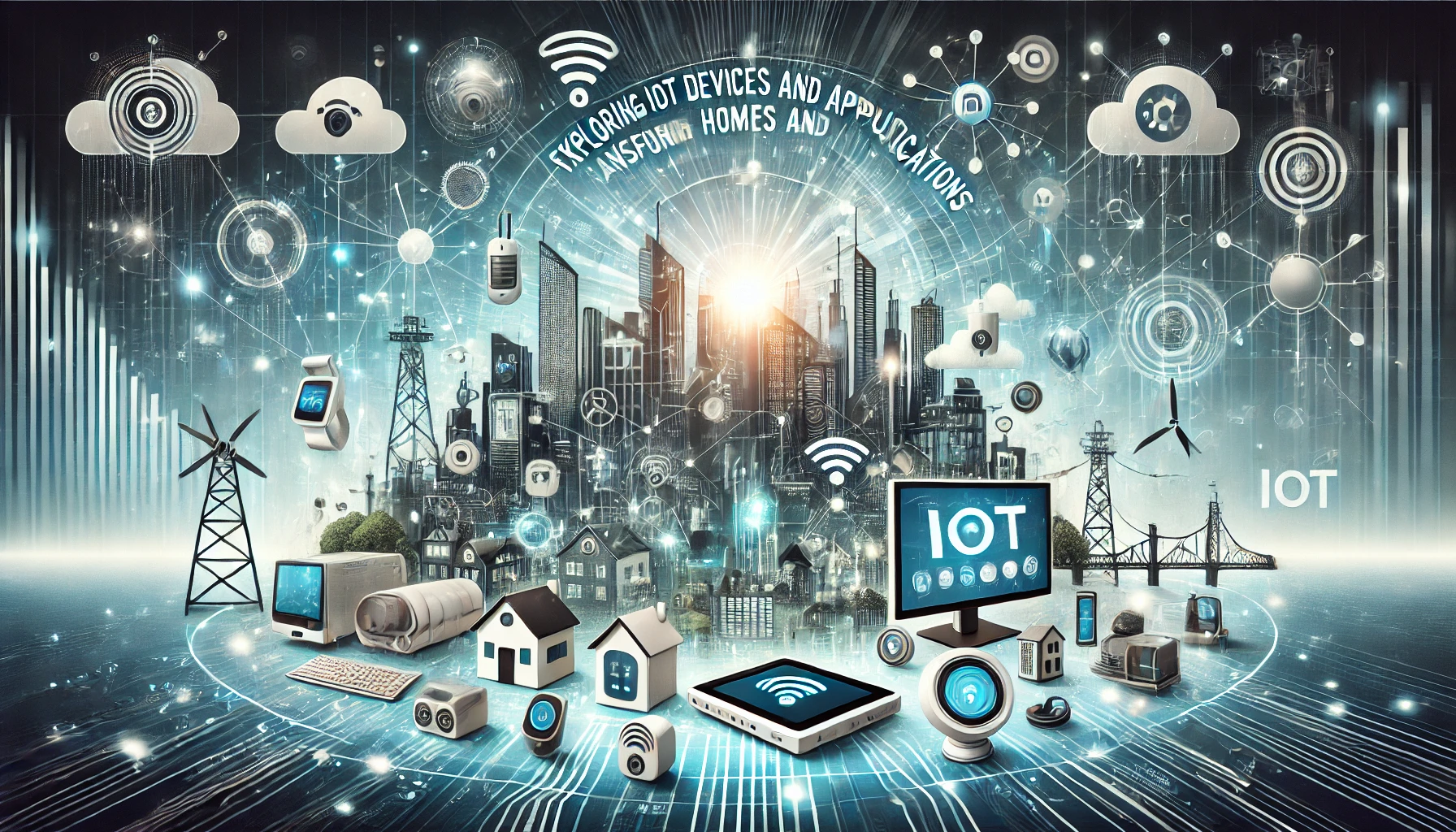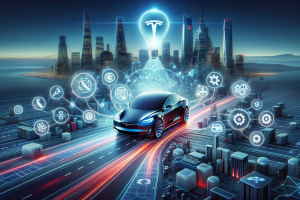Internet of Things (IoT) Devices and Applications: Transforming Homes and Industries
- Posted by Mia Walker (Australia)
- Categories Technology
- Date July 25, 2024
Internet of Things (IoT) is revolutionizing the way we live and work, connecting everyday objects to the internet and enabling them to communicate with each other. This transformation is evident in the increasing adoption of IoT devices, smart home devices, and innovative IoT applications. This blog delves into the world of IoT, exploring its devices, applications, security, connectivity, and future trends.
Understanding IoT Devices
What are IoT Devices?
IoT devices are physical objects embedded with sensors, software, and other technologies to connect and exchange data with other devices and systems over the internet. These devices range from simple household items like smart thermostats to complex industrial machines.
Examples of IoT Devices
- Smart Thermostats: Adjust home temperatures automatically based on user preferences and external conditions.
- Wearable Devices: Track health metrics like heart rate and steps taken (e.g., Fitbit, Apple Watch).
- Connected Cars: Provide real-time data on traffic, weather, and vehicle performance.
- Industrial Sensors: Monitor machinery in factories to predict maintenance needs and improve efficiency.
Benefits of IoT Devices
IoT devices offer numerous benefits, including:
- Convenience: Automate routine tasks, saving time and effort.
- Efficiency: Optimize processes by providing real-time data and insights.
- Cost Savings: Reduce energy consumption and maintenance costs.
- Enhanced Security: Improve safety through monitoring and alerts.
Smart Home Devices
Transforming Homes with Smart Home Devices
Smart home devices are a subset of IoT devices designed to make homes more convenient, efficient, and secure. These devices can be controlled remotely through smartphones or voice assistants like Amazon Alexa and Google Assistant.
Popular Smart Home Devices
- Smart Lighting: Adjust lighting based on user preferences and presence in the room.
- Smart Security Cameras: Monitor home security remotely and send alerts for suspicious activities.
- Smart Speakers: Control other smart devices, play music, and provide information through voice commands.
- Smart Appliances: Refrigerators, washing machines, and ovens that can be controlled remotely and provide usage data.
Advantages of Smart Home Devices
- Convenience: Control devices remotely or through voice commands.
- Energy Efficiency: Automate energy usage to reduce consumption and costs.
- Improved Security: Monitor and secure homes with real-time alerts and remote access.
- Customization: Tailor device settings to individual preferences and schedules.
IoT Applications
Broad Applications of IoT
The applications of IoT extend across various sectors, significantly impacting industries like healthcare, agriculture, manufacturing, and transportation. IoT applications are designed to improve efficiency, reduce costs, and provide better services.
Key IoT Applications
- Healthcare: Remote patient monitoring, smart medical devices, and health data analytics.
- Agriculture: Precision farming, livestock monitoring, and automated irrigation systems.
- Manufacturing: Predictive maintenance, asset tracking, and production optimization.
- Transportation: Fleet management, traffic monitoring, and autonomous vehicles.
Industrial IoT
Industrial IoT (IIoT) refers to the use of IoT technologies in industrial applications. IIoT enhances operational efficiency, safety, and productivity in industries like manufacturing, energy, and logistics.
Examples of Industrial IoT
- Predictive Maintenance: Sensors monitor equipment health and predict maintenance needs to prevent downtime.
- Supply Chain Optimization: Real-time tracking of goods and assets throughout the supply chain.
- Energy Management: Optimize energy usage in industrial processes to reduce costs and environmental impact.
IoT Solutions
IoT solutions encompass the software and platforms that enable the deployment and management of IoT devices and applications. These solutions include IoT platforms, analytics tools, and connectivity services.
Leading IoT Solutions
- IoT Platforms: Provide a comprehensive environment for developing, managing, and analyzing IoT applications (e.g., AWS IoT, Microsoft Azure IoT).
- IoT Analytics: Analyze data generated by IoT devices to gain insights and make informed decisions.
- IoT Connectivity: Ensure reliable and secure communication between IoT devices and networks.
IoT Security and Connectivity
Ensuring IoT Security
Security is a critical aspect of IoT, given the vast amount of data generated and exchanged by IoT devices. Ensuring the security of IoT systems involves protecting data, devices, and networks from unauthorized access and cyber threats.
IoT Security Best Practices
- Data Encryption: Encrypt data at rest and in transit to protect it from interception.
- Device Authentication: Implement strong authentication mechanisms to verify device identities.
- Regular Updates: Keep device firmware and software up to date to mitigate vulnerabilities.
- Network Security: Secure IoT networks with firewalls, intrusion detection systems, and VPNs.
IoT Connectivity
Connectivity is the backbone of IoT, enabling devices to communicate and exchange data. Various connectivity options are available for IoT, each suited to different applications and environments.
Types of IoT Connectivity
- Wi-Fi: Ideal for high-bandwidth applications within a limited range.
- Bluetooth: Suitable for short-range, low-power applications like wearable devices.
- Cellular: Provides wide-area coverage for mobile and remote IoT applications.
- LPWAN (Low-Power Wide-Area Network): Designed for low-bandwidth, long-range applications like smart meters and environmental sensors.
Future Trends in IoT
IoT Trends Driving Innovation
The future of IoT is shaped by emerging trends and technologies that promise to enhance its capabilities and expand its applications. Key trends include:
- Edge Computing: Processing data closer to the source to reduce latency and bandwidth usage.
- Artificial Intelligence (AI) and Machine Learning (ML): Integrating AI and ML to analyze IoT data and enable intelligent decision-making.
- 5G Connectivity: Leveraging the high speed and low latency of 5G networks to support advanced IoT applications.
- Blockchain for IoT Security: Using blockchain technology to secure IoT data and transactions.
The Impact of IoT Trends
- Enhanced Performance: Edge computing and 5G will significantly improve the performance of IoT applications.
- Smarter Insights: AI and ML will enable more accurate predictions and automated actions based on IoT data.
- Increased Security: Blockchain technology will provide robust security for IoT systems, reducing the risk of cyber threats.
The Internet of Things (IoT) is transforming homes and industries by connecting devices, enabling smart applications, and driving innovation. From smart home devices that enhance daily life to industrial IoT applications that optimize operations, IoT is revolutionizing the way we interact with technology. As IoT continues to evolve, staying informed about the latest trends, solutions, and security practices is essential for harnessing its full potential.
For more insights into the Internet of Things and its impact, visit Regent Studies. Explore how IoT devices, smart home devices, and innovative applications are shaping the future and transforming industries worldwide.
References:
You may also like




